Solid Oil Bearings
Table of Contents
Definition
Solid oil bearings incorporate a porous solid material impregnated with lubricating oil, providing self-contained lubrication for reduced friction and enhanced durability in mechanical applications.
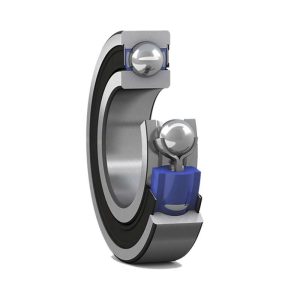
FHD Bearings is an ISO 9001:2015 certified manufacturing enterprise that stocks a full range of spot-pack and full-pack Solid oil bearings. With over 1,200 different bearing sizes and over 250K bearings in stock.
Materials
Lithium-based Grease
Lithium-based greases are widely used in solid grease bearings due to their excellent stability, water resistance, and wide temperature range. They consist of lithium soap as a thickening agent, along with mineral or synthetic base oils.
Calcium-based Grease
Calcium-based greases use calcium soap as the thickening agent. They are known for their good water resistance and anti-corrosion properties.Suitable for applications where water resistance is crucial, such as in agricultural equipment.
Silicone Grease
Silicone greases use silicone oil as a base fluid and various thickeners. They are known for their wide temperature range and resistance to oxidation.
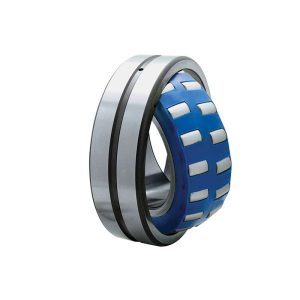
Aluminum Complex Grease
Aluminum complex greases use aluminum soap as a thickening agent. They offer excellent high-temperature stability and water resistance.
PTFE (Polytetrafluoroethylene) Grease
PTFE greases contain polytetrafluoroethylene, a solid lubricant, as an additive. PTFE provides excellent low-friction properties and is often used in high-performance applications.
Features

- Self-Contained Lubrication: Solid grease bearings have an integral, self-contained lubricant within the bearing structure, eliminating the need for external lubrication systems.
- Enhanced Containment of Lubricant: The solid nature of the lubricant in these bearings minimizes the risk of spillage, leakage, or migration, ensuring a more contained lubrication system.
- Reduced Susceptibility to Environmental Influences: Solid grease bearings exhibit a level of robustness against environmental factors, such as dust, moisture, and other contaminants, due to their inherent design.
- Stability in Varying Load Conditions: The solid lubricant maintains its position within the bearing, providing stability and consistent lubrication even under changing load conditions.
- Low Sensitivity to Temperature Fluctuations: Solid grease maintains its integrity across a range of temperatures, contributing to stable performance in applications with varying thermal conditions.
Advantages
- Maintenance-Free Operation: Solid oil bearings are designed for maintenance-free operation, as the solid lubricant is integrated into the bearing and eliminates the need for periodic re-greasing.
- Extended Bearing Life: The continuous supply of solid oil contributes to reduced friction and wear, potentially extending the operational life of the bearing and reducing the frequency of replacements.
- Simplified Lubrication System: Solid oil bearings simplify the lubrication system by integrating the lubricant into the bearing structure, reducing the need for complex external lubrication systems.
- Stable Lubrication at High Temperatures: Solid oil bearings offer stable lubrication even in high-temperature environments, making them suitable for applications where traditional liquid lubricants may break down.
- Reduced Leakage and Drip: Solid oil minimizes the risk of leakage and dripping associated with liquid lubricants, contributing to a cleaner operating environment and reducing the potential for contamination.
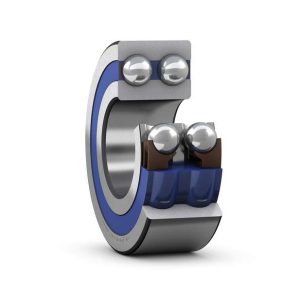
Taxonomy
Roller Bearings with Solid Oil

Spherical Roller Bearings with Solid Oil
Solid Oil spherical roller bearings excel in challenging conditions, resisting moisture and contaminants, making them ideal for impractical or hazardous relubrication environments.
Ball Bearings with Solid Oil

Deep Groove Ball Bearings with Solid Oil
Deep groove ball bearings with Solid Oil offer superior performance, providing robust solutions for challenging environments with moisture and contaminants.
Applications
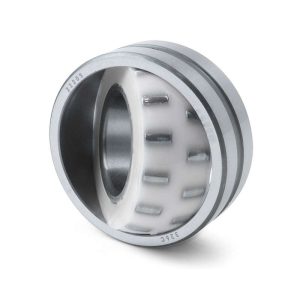
- Steel Mills: Solid oil bearings thrive in the harsh conditions of steel mills, where high moisture levels and contaminants are prevalent.
- Food Processing: Ideal for food processing machinery, Solid Oil bearings prevent contamination risks in environments requiring high hygiene standards.
- Marine Equipment: Resilient to water exposure, Solid Oil bearings are well-suited for marine applications, ensuring reliable performance in challenging sea conditions.
- Paper Mills: In paper production settings, Solid Oil bearings withstand the moisture-rich and dusty environments, providing long-lasting and low-maintenance solutions.
- Mining Operations: Solid Oil bearings excel in mining machinery, enduring tough conditions involving dust, water, and heavy loads.
- Agricultural Machinery: With resistance to moisture and contaminants, Solid Oil bearings are well-suited for agricultural equipment, offering reliability in diverse farming environments.
- Chemical Processing: Solid Oil bearings find application in chemical plants, where resistance to moisture and chemicals is crucial for maintaining operational integrity.
Key Manufacturing Solid Oil Bearings
Solid Oil Infusion
The manufacturing process involves impregnating the bearing with a solid oil substance, ensuring a consistent and durable lubrication source throughout its operational life.
Bearing Component Fabrication
The individual components of the bearing, such as the inner and outer rings, rolling elements, and cages, are fabricated to exact specifications using materials suitable for the intended application.
Heat Treatment
Heat treatment processes are employed to enhance the hardness and durability of the bearing components, ensuring they can withstand heavy loads and challenging operating conditions.
Precision Machining
Advanced machining techniques are utilized to achieve tight tolerances and precise dimensions, crucial for the proper functioning of the bearing.
Assembly
The various bearing components are meticulously assembled, ensuring proper alignment and fit to optimize the bearing’s overall performance.
Surface Coating
Some Solid Oil bearings may undergo surface treatments or coatings to enhance their corrosion resistance, protecting them from environmental factors encountered in specific applications.


FAQ - Frequently Asked Questions
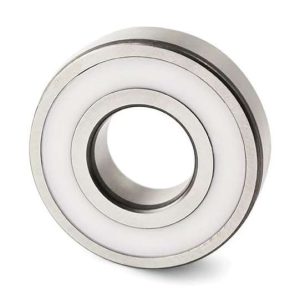
Solid Oil technology involves infusing a solid lubricant into the bearing structure to provide continuous and reliable lubrication.
Solid Oil ensures consistent lubrication, even in challenging conditions, reducing friction, wear, and the need for additional lubrication.
Solid Oil bearings excel in environments with high moisture, contaminants, and where relubrication is impractical or unsafe.
Yes, Solid Oil bearings can operate effectively at elevated temperatures, providing stable lubrication.
Yes, Solid Oil bearings are designed to accommodate heavy loads bidirectionally while maintaining performance.
Solid Oil technology helps prevent the ingress of dust, making these bearings suitable for dusty environments like mining operations.
Yes, Solid Oil bearings are ideal for food processing as they resist contaminants, ensuring compliance with hygiene standards.
Absolutely, Solid Oil bearings are resistant to water exposure, making them suitable for marine equipment.
While they reduce the need for regular relubrication, some maintenance may still be required depending on the application and operating conditions.
Generally, installation procedures are similar to traditional bearings, but following manufacturer guidelines is crucial for optimal performance.
Yes, Solid Oil bearings can be suitable for corrosive environments, and additional surface coatings may enhance corrosion resistance.
Solid Oil bearings can operate in a wide temperature range, from low to high temperatures depending on the specific design and application.
In many cases, Solid Oil bearings are interchangeable, but it’s advisable to consult with the manufacturer to ensure compatibility.
While Solid Oil bearings are designed for situations where relubrication is impractical, some types may allow limited relubrication. Check the manufacturer’s recommendations.
Solid Oil bearings typically do not require a break-in period, as the solid lubricant provides immediate and consistent lubrication.
Yes, Solid Oil bearings come in a variety of sizes and configurations to suit different applications and machinery.
Solid Oil bearings can be suitable for high-speed applications, but it’s essential to choose the appropriate design and consult with the manufacturer.
Solid Oil bearings generally have a long shelf life, but storage conditions should be considered to prevent degradation.
Yes, Solid Oil bearings are designed to handle shock loads effectively, providing durability in challenging operating conditions.
While initial costs may be higher, the reduced need for maintenance and extended service life often make Solid Oil bearings cost-effective over time.
Installation and Maintenance
Installation
- Solid Oil Activation: Before installation, ensure that the solid oil lubricant is properly activated within the bearing. This may involve preheating the bearing to a specific temperature, allowing the solid oil to become fluid.
- Precise Temperature Control: Maintain precise temperature control during installation to prevent any adverse effects on the solid oil properties. Follow manufacturer guidelines for temperature requirements.
- Specialized Installation Tools: Use specialized tools recommended by the manufacturer for installing solid oil bearings to ensure accurate alignment and minimize the risk of damage during installation.
- Avoid Excessive Force: Exercise caution to avoid applying excessive force during installation, as this can damage the solid oil structure and compromise the bearing’s lubrication capabilities.
- Monitor Solid Oil Distribution: Throughout the installation process, monitor the distribution of solid oil within the bearing to confirm that it is evenly spread and properly activated.
- Consideration of Orientation: Take into account the orientation of the bearing during installation, as some solid oil bearings may have specific requirements for optimal performance in certain orientations.
- Post-Installation Verification: After installation, conduct a post-installation verification, which may include additional checks on temperature, clearance, and rotation to confirm the integrity of the solid oil bearing system.
Maintenance:
- Solid Oil Inspection: Regularly inspect the condition of the solid oil within the bearing. Ensure that it remains in a fluid state and is evenly distributed, as any solidification or uneven distribution could affect lubrication.
- Temperature Monitoring: Implement temperature monitoring to detect any anomalies that could indicate issues with the solid oil lubrication. Sudden increases in temperature may signal problems with the bearing or lubricant.
- Vibration Analysis: Perform vibration analysis to identify potential problems with the solid oil bearing. Unusual vibrations may indicate misalignment, imbalance, or issues with lubrication.
- Seal Integrity Check: If the solid oil bearing includes seals, regularly check their integrity. Damaged or compromised seals could allow contaminants to enter the bearing, affecting performance.
- Clearance Adjustment: Monitor and, if needed, adjust the clearance settings of the solid oil bearing to ensure optimal performance. Changes in operating conditions or wear over time may necessitate adjustments.
- Periodic Rotation: Rotate the shaft periodically to ensure even distribution of the solid oil within the bearing. This helps prevent stagnation and ensures that the lubricant reaches all critical areas.
- Lubricant Top-Up (if applicable): Depending on the design, some solid oil bearings may allow for lubricant top-up. Follow manufacturer guidelines for adding or replenishing the solid oil, if necessary.

Related Posts
The Art of Micro-Lubrication: The Rise of Solid Oil Bearing Solutions
Table of Contents Categories The Art of Micro-Lubrication: The Rise...
Read MoreSolid Oil Bearings: The Silent Revolution in Machinery
Solid Oil Bearings: The Silent Revolution in Machinery Table of...
Read MoreUnlock the Future of Friction with Solid Oil Bearings
Unlock the Future of Friction with Solid Oil Bearings Table...
Read More


